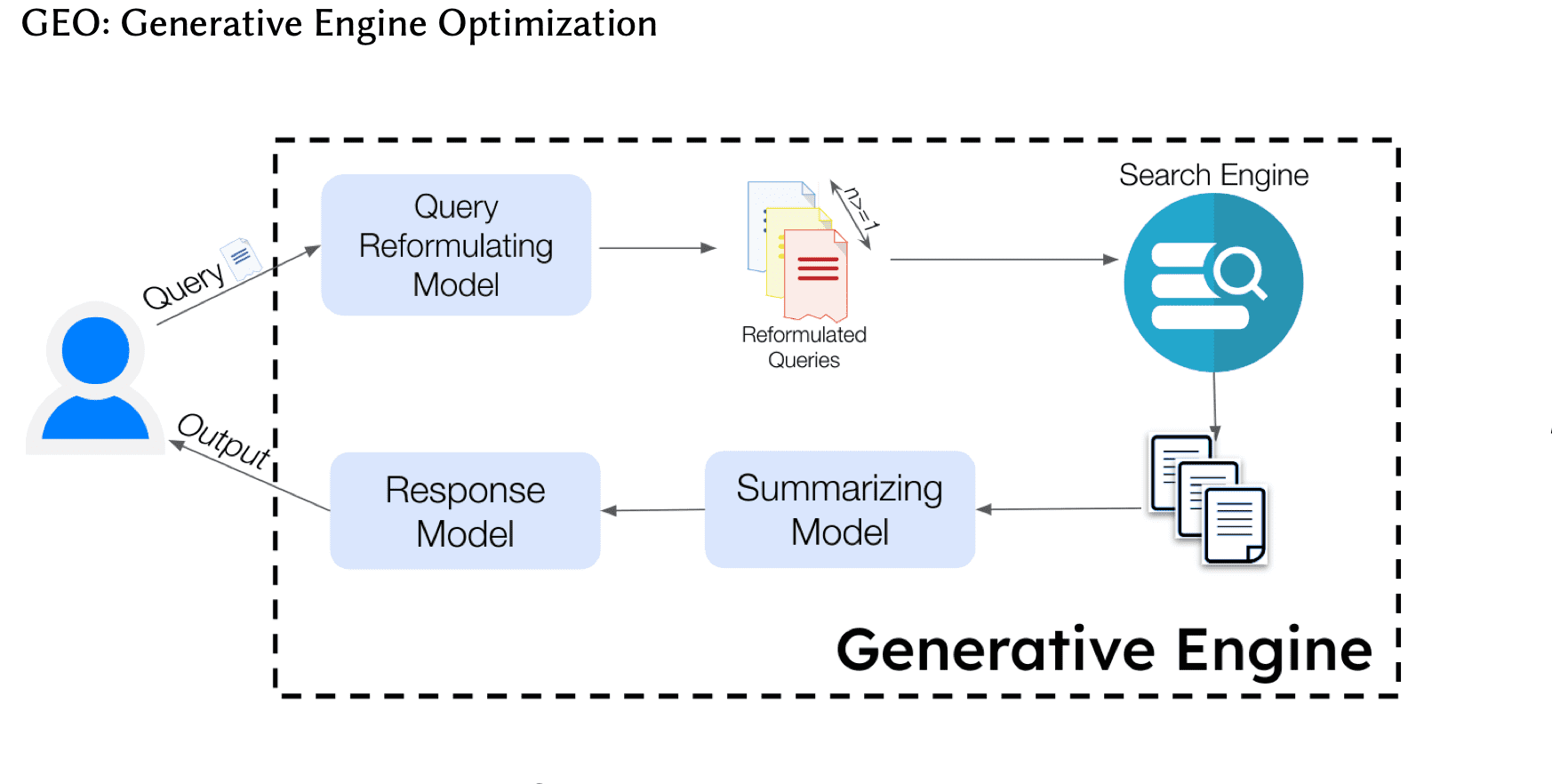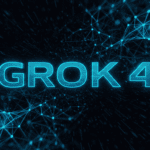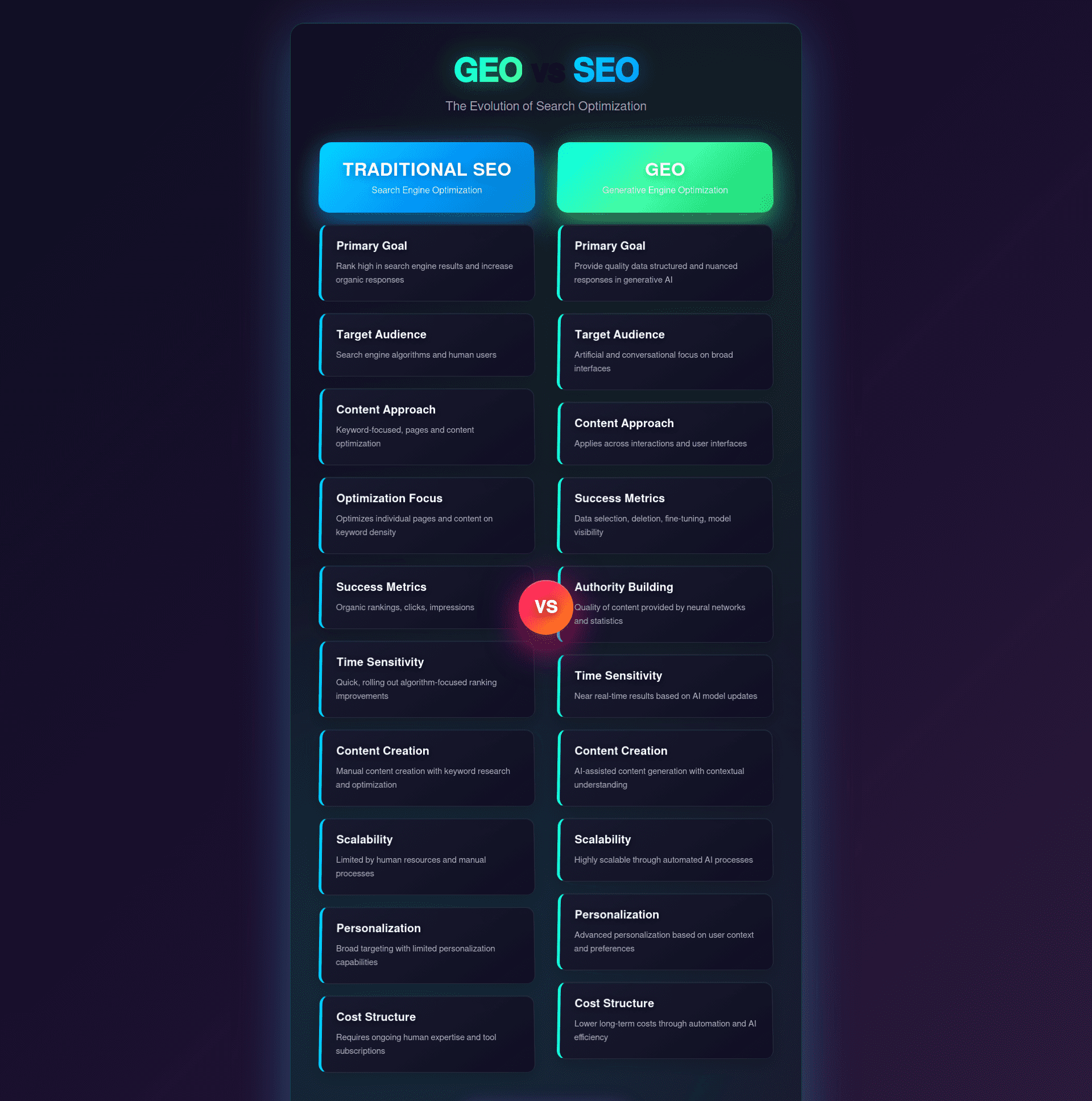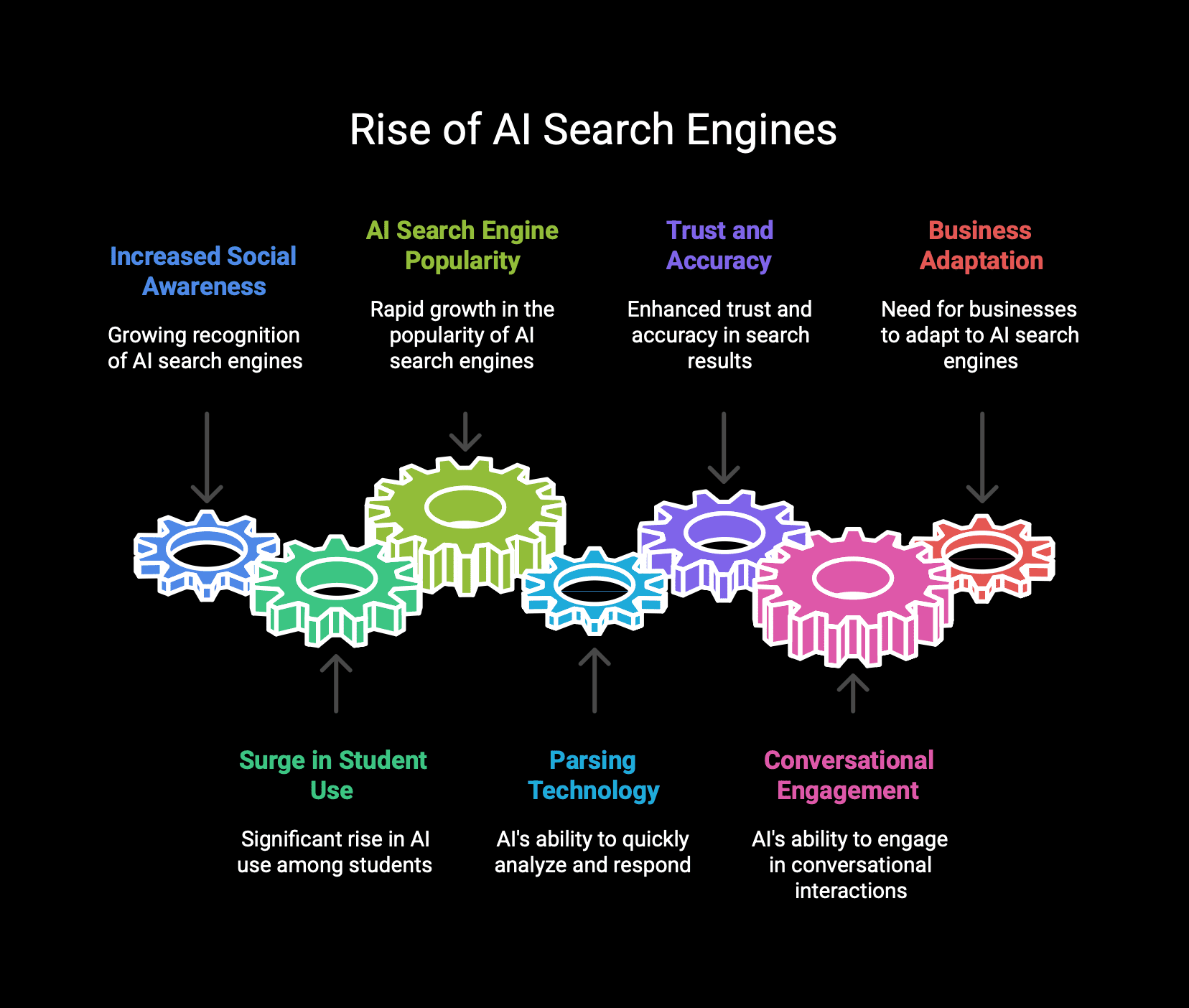Written By Paul Rowe with ChatGPT insights, Founder of NeuralAdX Ltd and Chief Generative Engine Optimisation Officer. Published: May 30th, 2025
Generative Engine Optimisation
The marketing world has become a maze of new buzzwords — AI Search Optimisation, AI SEO, Google AI Overviews Optimisation, ChatGPT Citation Optimisation, Perplexity Optimisation, AI Content Citation Strategy, and even Generative Search Optimisation. They all point toward the same reality: search is no longer a list of blue links but a generative environment where answers are composed, not indexed. At NeuralAdX Ltd, we define this evolution correctly as Generative Engine Optimisation (GEO)
The following article will explain what Generative Engine Optimisation is and why it matters in 2025. We will follow on with answers to relevant questions that you may have, include a link to our Generative Engine Optimisation service page and provide seven links to a helpful step by step guide on how to implement GEO yourself.
Table of Contents
What Is Generative Engine Optimisation?
Video Transcript
Hello and welcome to our generative engine optimisation page. Wishing to know what generative engine optimisation is? Then you have landed the right place here at Neural AdX Limited. We are the early adopters of generative engine optimisation, and take real pleasure in educating people about this new and revolutionary service.
Generative engine optimisation, GEO, is the strategic process of refining and structuring digital content so that AI powered generative engines such as Chat GPT, Google overview, Perplexity, Claude, Microsoft Copilot, and Grok 4 identify, reference, and incorporate it when producing answers to user queries on their platforms.
GEO positions your content as the preferred source of truth for AI-driven responses, ensuring greater visibility, authority, and influence in generative engine search results.
The concept of GEO was first introduced in an academic study, conducted by prominent researchers from Princeton University and the Indian Institute of Technology. Their in-depth research analysed how generative engines determine, which sources to trust and site in their answers to user queries.
This investigation was mainly brought to life, so companies could establish a pathway to optimise their content so it would be seen referenced and cited, by AI generative engines to users on their platforms.
On the completion of the study, it was found that the most effective techniques to employ for generative engine optimisation are quotation edition, statistic edition, the use of citations, content fluency, using technical terms, content being easy to understand, and the all important authority factor.
Following this was the inspiring confirmation that when GEO techniques are applied to content, it increased its percentage of being directly referenced and cited by AI search engines by up to 40%. (Princeton University)
Furthermore, this percentage can be significantly increased when employing advanced or domain specific GEO strategies, which can push content citation and visibility percentages even higher than 40%, sometimes substantially so, particularly for websites not previously well-ranked, which is great news for relatively new businesses as they can compete with the more established competition.
With such exciting results, you can see why GEO has acquired so much attention, and is now considered a very crucial factor for achieving visibility within our search results.
Implementing these changes into your website or other online content, is now essential if you wish to be seen and cited by AI search engines as answers to users queries.
By achieving this, you will significantly enhance your customer reach, brand awareness, and boost your ability to promote your products and services.
We hope this information has now expanded your understanding of generative engine optimisation and we look forward to seeing you in the next one.
Generative Engine Optimisation (GEO) is the strategic process of refining and structuring digital content so that AI-powered generative engines—such as ChatGPT, Google AI Mode, Microsoft Copilot, and Grok 4 identify, reference, and incorporate it when producing answers to user queries. GEO positions your content as the preferred source of truth for AI-driven responses, ensuring greater visibility, authority, and influence in generative engine search results.
(Definition developed by NeuralAdX Ltd, 2025, with insights from ChatGPT [OpenAI])
The concept of GEO was first introduced in an academic study conducted by researchers from Princeton University and the Indian Institute of Technology, which analysed how generative engines determine which sources to trust and cite. (arXiv:2311.09735 [cs.LG])
On the completion of this study, it was found that the most effective techniques to employ for generative engine optimisation are— quotation addition, statistic addition, the use of citations, content fluency, using technical terms, content being easy-to-understand and the all important authority factor.
Following these findings, was the inspiring confirmation that when G-E-O techniques are applied to content, it increased it’s percentage of being directly referenced and cited by A-I search engines by up to 40%.
In addition to this, that percentage “Can be significantly increased, when employing advanced or domain specific G-E-O strategies, which can push content citation and visibility percentages even higher than 40%,— sometimes substantially so,— particularly for websites not previously well ranked.” (ArXiv:2311.09735)
This is great news for relatively new businesses, as they can now compete with the more established competition which allows them the opportunity to grow faster than ever before. With these incredibly exciting results, you can see why G-E-O has acquired so much attention and is now considered a very crucial factor for achieving visibility within A-I search results.
If you are interested in the subtopic “How Does Generative AI work” click the button below.
How Generative Engines Technically Process Queries
Generative engines such as ChatGPT, Perplexity, Microsoft Co-Pilot and Google’s AI Mode, use a structured, multi-stage process to turn a user’s question into a coherent, grounded answer.
The diagram below is directly from the peer-reviewed paper that created and introduced Generative Engine Optimisation (GEO) — “Generative Engine Optimization,” Aggarwal et al., Princeton University, ACM KDD 2024
 Original diagram from the Princeton University GEO paper illustrating the multi-stage architecture behind generative engines.
Original diagram from the Princeton University GEO paper illustrating the multi-stage architecture behind generative engines.
When a user submits a query, the Query Reformulating Model expands or rephrases it into several related searches. These reformulated queries are passed to a Search Engine Retriever, which gathers relevant web pages and documents.
A Summarising Model then condenses those sources into factual takeaways, and finally the Response Model generates a fluent, source-grounded reply for the user.
This flow diagram shows that modern generative engines don’t merely retrieve information… they synthesise it. Each step depends on structured, cited, and readable web content.
That’s why Generative Engine Optimisation (GEO) focuses on building pages that can be found, summarised, and cited within this AI decision chain.
If you would like to dive deeper on this topic then visit our How does generative AI work page.
Why Generative Engine Optimisation Matters in 2025?
Video Transcript
Hello and welcome back to more of our carefully crafted, customer content made especially just for you. So why does generative engine optimisation matter in 2025? GEO matters and is arguably indispensable in 2025 because generative AI search engines aka generative engines, now dominate the way users discover evaluate and engage, with information online.
The high-speed adoption by users of AI conversational platforms like Chat GPT, Perplexity, Microsoft Copilot, Grok 4, and Gemini, has fundamentally transformed digital marketing, content delivery, and consumer behaviour.
Today, more than half of internet users have replaced traditional search engines with AI-driven discovery tools in regard to finding products, services, and information.
The customer journey often starts and ends inside an AI interface where users receive direct answers instead of clicking through long lists of links. Generative engines, unlike classic search engines, generate contextualised and synthesised responses.
This essentially means, AI search engines actually select and site content within their answers, making the ability to be referenced by these systems, a new measure of digital authority for all businesses throughout the world.
The popularity of these AI search engine platforms can accurately be described as explosive, especially when you consider Chat GPT was launched on November 30th, 2022 and achieved 1 million users in 5 days. 1 month later in December 2022, it had 264.7 million users and in February 2025, it achieved a staggering 5.2 billion customers.(OpenAI)(doitsoftware)
In addition to this, according to Brad Litecap, OpenAI’s chief operating officer, Chat GPT had 400 million weekly users in February 2025. With such incredible statistics showing how rapidly users are switching over to AI search platforms, it becomes very clear to see just how important generative engine optimisation is now and how crucial it will be in the future. (Exploding topics, 2025)
We hope you have found our content to be informative and as always we look forward to seeing you in the next one.
Generative Engine Optimisation (GEO) matters and is arguably indispensable in 2025 because generative AI search engines (aka generative engines) now dominate the way users discover, evaluate, and engage with information online.
With the high-speed adoption by users of conversational platforms like ChatGPT, Perplexity, Grok 4 and Google AI Mode. It has fundamentally forced a transformed in digital marketing, content delivery, and consumer behaviour.
Today, more than half (58%) of internet users have replaced traditional search engines with AI-driven discovery tools for finding products, services, and information. The customer journey now often starts and ends inside an AI interface, where users receive direct answers instead of clicking through long lists of links (Capgemini, 2025)
Generative engines, unlike classic search engines, generate contextualised, synthesized responses. This means AI search engines actually select and cite content within their answers, making the ability to be referenced by these systems a new measure of digital authority for all businesses.
The popularity of AI search engines can accurately be described as explosive, especially when you consider that ChatGPT was launched on November 30th 2022 (Wikipedia) and achieved 1 million users in 5 days. One month later in December 2022 it had 264.7 million users and in February 2025 it achieved a staggering 5.2 Billion user visits (exploding topics)
To enhance this already compelling information, we have researched and cited four current and related statistics from trusted sources across the internet, to further bolster why generative engine optimisation matters in 2025.
- Perplexity AI is rapidly growing, with over 50 million monthly visits and over 500 million queries per year (Exploding Topics).
- According to Brad Lightcap, OpenAI’s Chief Operating Officer, ChatGPT had 400 million weekly users in February 2025 (exploding topics, 2025)
- 63% of websites already receive traffic from generative search engines(Ahrefs, 2025)
- 64% of customers are prepared to purchase products directly from AI recommendations (masterofcode,2025)
With all the above taken into account, its clear to see that if your business website or online content is not generative engine optimised for these AI platforms, you will lose relevance, reach, and revenue in this rapidly evolving digital marketplace.
Will Traditional SEO be Replaced by GEO?
Video Transcript
Hello and welcome back. It’s always a pleasure to provide you with informative content.We now address the question, will traditional SEO be replaced by GEO?The direct and reassuring answer to this very important query is no.Generative engine optimisation will not replace SEO, but it marks a revolutionary advancement that is reshaping the methods used to ensure digital visibility.The reality is, GEO enhances and accelerates SEO by helping brands achieve greater visibility across both traditional search engines and AI-driven platforms such as chat GPT perplexity grok and Microsoft copilot to name a few.Therefore, rather than replacing SEO, GEO and SEO work together as part of the evolution of search engine optimisation.GEO’s innovative approach to AI powered search results opens entirely new opportunities for businesses to expand their customer base which SEO on its own is not able to provide access to.Research shows that 68% of digital marketers now integrate GEO and SEO strategies to stay competitive across all search platforms.While SEO remains essential, for ranking in traditional search engines and providing the foundation that AI systems learn from.GEO focuses on optimising content for AI generated responses and direct citations in conversational AI platforms.One way we simplify this relationship between SEO and GEO is to frame it that SEO is the foundation strategy that gets your content indexed by search engines while GEO convinces AI generative engines to use your content as the direct answer to users queries.Understanding this complimentary relationship, is crucial for businesses that want to maximise their digital reach, and harness the full potential of this newly emerging and essential content strategy.This essentially symbiotic relationship between SEO and GEO is very well received by the vast majority of companies who have invested heavily in SEO.Now all they need to do is integrate a comprehensive GEO strategy into their online content so they can maximise their chances of retaining and building upon their existing customer base.So there you have it. We hope this video has provided you with the clear answer you were looking for, And as always, we look forward to seeing you in the next one. (ACM Digital, 2024) (Google Search Central)
The direct answer is No – GEO (Generative Engine Optimisation) will not replace SEO, but it marks a revolutionary advancement that is reshaping digital visibility. As AI technology evolves, the question of whether GEO will replace SEO has become increasingly relevant. However, evidence shows that GEO complements SEO by helping brands achieve greater visibility across both traditional search engines and AI-driven platforms (Walker Sands, 2024)
Rather than replacing SEO, GEO and SEO work together as part of the evolution of search optimisation. GEO’s innovative approach to AI-powered search results opens entirely new channels for customer acquisition that SEO alone cannot reach. Research shows that 68% of digital marketers now integrate GEO and SEO strategies to stay competitive across all search platforms (GetPassionFruit, 2025)
While SEO remains essential for ranking in traditional search engines and providing the foundation that AI systems learn from, GEO focuses on optimising content for AI-generated responses and direct citations in conversational AI platforms. Understanding this complementary relationship is crucial for businesses that want to maximise digital reach and harness the full potential of this new optimisation era.
What Are The Differences Between SEO And GEO?
Video Transcript
Hello and welcome back. So, let’s expand for you on what the differences are between SEO and GEO. The simple answer is that SEO or search engine optimisation was created to help websites rank on traditional search engines like Google. While GEO or generative engine optimisation is built for today’s AI powered search engines like Chat, GPT, Perplexity, and Gemini. SEO focuses on using keywords, back links, and metadata to appear in lists of search results, but it was designed for human curated ranking systems, not for AI models generating real-time answers. GEO, on the other hand, is designed specifically to help content get found, understood, and quoted directly by AI search. With SEO, you compete for a click in a sea of blue links. With GEO, your content becomes the answer the AI delivers instantly. SEO is still important for web visibility, but GEO is about being visible to AI by structuring your content for clarity, context, and authority in a way that generative engines can read and use. So, while SEO is about being indexed and ranked, GEO is about being surfaced and spoken about directly by AI. Therefore, the results are fundamentally different. SEO might get you traffic, but GEO can get you quoted, trusted, and embedded in the AI response itself. Another key difference is speed. SEO can take many months to build authority, while GEO can gain traction quickly as AI models adopt new sources rapidly. SEO depends heavily on links and technical site health. But GEO focuses on how well your content answers specific questions in an AI readable format. SEO often targets ranking on page one. GEO targets becoming the source behind what the AI directly responds to the user. And while SEO measures clicks and impressions, GEO focuses on mentions, citations, and AI attribution. As more people search through AI tools instead of browsers, this difference matters more than ever. If you’re still only relying on SEO, you’re missing out on the growing share of AI search mentions. In short, SEO helps with traditional search ranking, but GEO makes you part of the AI answer, and that’s where the future is heading. We hope this information has made the differences between these two online strategies clearer for you. (Google for Developers)
The digital landscape is rapidly shifting, with users increasingly turning to generative AI engines such as ChatGPT, Google AI Overviews, Copilot, and Perplexity instead of relying purely on traditional browser based search. These AI-powered platforms deliver direct, conversational answers, fundamentally changing the way users access and consume information. (Databox, June 2025)
While Search Engine Optimisation (SEO) remains valuable for increasing visibility on classic search engines, its effectiveness is diminishing in the context of generative AI platforms. SEO was fundamentally designed to help websites appear in ranked search listings, but AI systems now synthesize responses from multiple sources, often without referencing the original websites in a way that drives traditional traffic or click-throughs. (Full.io)
Because of this, relying solely on SEO means your content will not often surface and be cited for generative AI answers. Generative Engine Optimisation (GEO) addresses this shift by focusing on making content clear, factually accurate, and structured for AI to understand, trust, and reference in its generated output. (TMT, 2024)
Optimizing for GEO includes using concise language, structured headings, factual bullet points, and appropriate schema markup so AI systems can easily extract and present your information. These techniques not only make your content more accessible to users, but also ensure it is recognized as a credible source when AI engines formulate answers. (Full.io)
As users continue to migrate towards generative AI search, GEO is becoming not just an advantage, but a necessity for long-term digital visibility and authority. Incorporating GEO alongside SEO prepares your website for the evolving ways audiences search and ensures your expertise remains discoverable even as search habits continue to change. (Databox, June, 2025)
Below we have created a comparison infographic to illustrate the key differences between SEO and GEO to further help you understand the distinctions between the two.
Click on the image below and zoom in for improved clarity :)
How Does SEO Help With AI Search Engine Visibility?
Video Transcript
Hello and welcome back. So you would like to know how SEO helps with AI search engine visibility. It will be my pleasure to inform you. So let’s dive in. The way SEO helps with AI search engine visibility is by ensuring your content is discoverable in the web index that AI search engines rely on. This is a key ingredient for AI search success. As without your content being indexed, AI search engines will never know your content exists. We estimate the importance of AI indexing to be 50 to 60% of the battle for content to be visible online. This being said, SEO is not specifically designed to help with AI’s answer generation process, which is growing in importance as each day passes. So, keep this in mind. Back to SEO. Another element to mention is that SEO does increase your website’s authority. It does this by earning back links from reputable websites which signals trustworthiness and AI search engines prioritises such sources. This then increases the chances of your content being considered as the AI generated response to users queries. Another nourishing benefit is that SEO improves your website’s technical health. This then ensures fast website loading times, mobile friendliness and clean URL structures which makes your website accessible to AI crawlers. Whereas on the other end of the spectrum, poor technical SEO, eg slow websites can actually exclude your content from AI consideration. Additionally, we have to note that SEO aligns with broad queries. It does this by targeting high volume keywords to rank for such as laptops, for example. This in turn helps find your content for broad or related queries to that particular keyword, even if it’s not conversational. Lastly, and very importantly, SEO drives discoverability. By this, we mean having high traditional search rankings as this will increase the likelihood of I noticing your content. A good illustration of this is a website page that ranks number one for the term say best laptops. Such a page is much more likely to be considered by AI search engines when it is looking for a respected source to reference on the subject of laptops. Due to its earned popularity, this particular SEO benefit does not mean the content will be featured as its AI generated response. That determination will largely depend on GEO, which we will elaborate on for you in the video beneath this one. So in summing up, SEO certainly has its benefits and it has now transformed into being the basic foundation. All online content needs to be noticed by I generative engines. Maintaining a strong SEO presence on your website is fully recommended by us here at Neural AdX so you can maximise your online presence. We hope you found this information helpful and as always, we look forward to seeing you in the next one. (Google developers)
How SEO Helps with AI Search Engine Visibility (50-60% Importance)
SEO ensures your content is discoverable in the web index that AI search engines rely on. Its 60-80% importance reflects its critical role in making content accessible, though it’s less tailored for AI’s answer synthesis. Here’s how it works, step by step:
• Optimizes for Web Indexing:
• SEO uses keywords (e.g., “best laptops 2025”) to ensure search engines like Google crawl and index your content.
• AI search engines pull from this index, so SEO makes your content available for consideration.
• Boosts Site Authority:
• Earns backlinks from reputable sites, signaling trustworthiness (E-E-A-T: Experience, Expertise, Authoritativeness, Trustworthiness).
• AI prioritizes authoritative sources, increasing the chance your content is selected.
• Improves Technical Health:
• Ensures fast load times, mobile-friendliness, and clean URL structures, making your site accessible to AI crawlers.
• Poor technical SEO (e.g., slow sites) can exclude content from AI consideration.
• Aligns with Broad Queries:
• Targets high-volume keywords to rank for general topics (e.g., “laptops”).
• Helps AI find your content for broad or related queries, even if not conversational.
• Drives Discoverability:
• High traditional search rankings increase the likelihood AI notices your content.
• Example: A page ranking #1 for “best laptops” is more likely to be considered by AI, though not guaranteed to be featured.
How Does GEO Help With AI Search Engine Visibility?
Video Transcript
Hello and welcome back. Generative engine optimisation, GEO, helps with AI search engine visibility in the following ways. GEO adds structured geographic metadata to your content, making your location and relevance clear to AI crawlers. It embeds precise location signals, helping AI systems associate your services with a specific area. GEO ensures your website uses clean, machine readable formatting, making it easier for AI to pass your content accurately. It includes context rich headers and sub headers that align with natural language queries, improving the likelihood of your content being used as a direct answer. GEO focuses on geo targeted keyword saturation, aligning your content with region specific search intent. It creates hyperlocal service pages, increasing the specificity and relevance of your content to AI-driven local results. GEO encourages semantic structuring using natural well-defined language that AI models recognise and trust. It applies schema markup helping I understand your business type, location, services, reviews, and operating hours. G EO embeds local citations and nap consistency, name, address, and phone number across all content, reinforcing trust signals for AI ranking. It integrates frequently asked questions tailored to location-based search terms, making your answers more quotable by AI. GEO helps your content appear in zero click AI summaries, bypassing traditional link-based ranking systems. It optimises page speed and mobile responsiveness, which improves AI evaluation scores for technical performance. GEO ensures content freshness and local news integration, which AI systems favour for up-to-date and regional answers. It enhances internal linking structures, guiding AI through your site’s authority hierarchy. GEO promotes location’s specific testimonials giving AI more trustworthy user-based signals. It uses locally relevant examples and vocabulary making your content more relatable and indexable by region sensitive AI models. GEO encourages consistent cross-platform presence improving visibility across multiple AI training data sets. It aligns your brand with local expertise helping AI rank you as a subject matter authority in your area. And finally, GEO helps your business become a preferred data source for generative engines looking for fast, trustworthy, and regional content. So, if we are to sum up all this information for easier understanding, we can say that GEO when done properly provides AI platforms with every reason possible to choose your content to reference to a users’s query when it’s related to your area of expertise. We hope this information has been useful for you and we look forward to seeing you in the next one. (Microsoft Bing)(Schema.org)
How GEO Helps with AI Search Engine Visibility (80-95% Importance)
GEO optimizes content specifically for AI search engines, ensuring it’s selected and featured in conversational answers. Its 80-95% importance reflects its direct alignment with AI’s synthesis needs. Here’s how it works, step by step:
• Matches Conversational Queries:
• Targets question-based, long-tail queries (e.g., “What are the best laptops for students?”) in a conversational tone.
• AI search engines prioritize content matching user intent, increasing feature likelihood.
• Structures Content for AI:
• Uses clear formats like bullet points, FAQs, or tables to make content easy for AI to parse and summarize.
• Example: A bulleted list of “Top 5 Laptop Features” is more likely to be cited than dense text.
• Enhances AI Readability:
• Applies schema markup (e.g., FAQ, HowTo) to signal content context to AI.
• Helps AI understand and extract key information for answers.
• Boosts Authority for AI:
• Includes expert citations or primary sources to enhance credibility.
• AI favors authoritative, trustworthy content for synthesized responses.
• Ensures Answer Selection:
• Directly answers queries in concise, conversational language, aligning with AI’s goal of providing quick, clear responses.
• Example: A page answering “Why choose laptops over tablets?” with a clear summary is often featured in AI answers.
Why SEO (50-60%) and GEO (80-95%) Make Sense?
• SEO’s Role: SEO is foundational, ensuring your content is in the web index (50-60% of the battle). Without it, AI can’t find your content, but it doesn’t guarantee selection for answers.
• GEO’s Edge: GEO is more critical (80-95%) because it fine-tunes content for AI’s conversational and synthesis preferences, maximising the chances it’s chosen for answers within AI platforms.
• Overlap: Both share elements (e.g., authority), but GEO’s AI-specific focus gives it a higher impact. The percentages reflect their independent contributions, not a combined total
What is The Perfect Combination of SEO and GEO on a Website?
The perfect combination of SEO and GEO is for a website to be discoverable (SEO) and AI-friendly (GEO).
Here is the ideal structure:
• Homepage:
• SEO: Include primary keywords in title, meta description, and H1 (e.g., “Best Laptops 2025 – Your Guide to Top Picks”).
• GEO: Add a concise summary answering “What do we offer?” (e.g., “Find the best laptops for students, professionals, and gamers.”).
• Content Pages (e.g., Blog Posts, Guides):
• SEO: Use keyword-optimized titles, headers, and meta descriptions. Ensure 1,000+ words with backlinks to authoritative sources.
• GEO: Start with a conversational summary (e.g., “Why choose laptops? Here’s why…”), use bullet points or FAQs, and add schema markup.
• Technical Setup:
• SEO: Optimize for fast load times (under 2 seconds), mobile-friendliness, and clean URLs. Use sitemaps and robots.txt for crawlability.
• GEO: Multimodal content and Implement schema markup (e.g., FAQ or Article) across key pages to aid AI parsing.
• Authority Signals:
• SEO: Build backlinks from high-authority sites (e.g., tech blogs linking to your laptop guide).
• GEO: Include expert citations or bios to boost credibility for AI selection.
• Navigation and UX:
• SEO: Use clear navigation menus and internal linking to related content (e.g., link “Best Laptops” to “Laptop Buying Tips”).
• GEO: Ensure scannable content (e.g., lists, tables) for AI to extract answers easily.
Why This Structure Works:
• SEO (50-60%): Ensures your website is indexed, authoritative, and discoverable by AI search engines. Without SEO, your content may not be found, even with perfect GEO.
• GEO (80-95%): Makes your content AI-friendly, increasing the chance it’s featured in conversational answers. GEO builds on SEO’s foundation by providing AI search engines with everything they are looking for, which gives your content the maximum opportunity to be the AI generated answer to users queries.
How Do I Implement GEO Myself?
To implement GEO into a website or other online content, it would be wise to start by focusing on the seven most effective techniques, which have been proven by esteemed researchers at Princeton University and the Indian Institute of Technology. (arXiv:2311.09735v3 [cs.LG)
We have created seven individual pages for you which will explain step by step what you need to do for each technique. The title and link for each of these pages has been placed in the box below for your convenience.
Alternatively, you can visit our Generative Engine Optimisation Service page, and allow us do all the heavy lifting for you.
- How To Build Authority For Generative Engine Optimisation
- How To Implement Citations For Generative Engine Optimisation
- How To Implement Fluency Optimisation For Generative Engine Optimisation
- How To Implement High Quality Quotations For Generative Engine Optimisation
- How To Implement High Quality Statistics For Generative Engine Optimisation
- How To Implement Technical Terms For Generative Engine Optimisation
- How To Make Content Easy To Understand For Generative Engine Optimisation
When should A Company Implement Generative Engine Optimisation
As of the current date 01/06/2025 social awareness and use of AI search engines (such as chat GPT, perplexity, Claude, Grok, Microsoft co-pilot and Google overview/AI Mode) has continued to significantly increase, even to the point that the dear reader of this text will likely have knowledge and insight on the exact tools we are mentioning.
If we look at one study which polled 1041 students “We find that the student use of AI has surged in the last year, with almost all students (92%) now using AI in some form, up from 66% in 2024”(Freeman, 2025)
Plus the fact that this intelligent technology “understands context, delivers nuanced answers, and engages with users conversationally”(Stihec, 2024) so it will in it’s own way build a rapport. like that of a secretary to a director, this alone will be a very strong anchor for the user to stay with this form of search as it will make their daily life easier and much more efficient in a world where time truly is money.
This real world example highlights just one segment of society (keep in mind today’s students are tomorrow’s leaders) that AI search engines are rapidly growing in popularity. This reference is also showcasing users that need and value high quality content to aid with their academic achievements, which speaks highly of these AI generative engines too.
These AI search engines use parsing technology to answer quickly, directly and in accordance with verified sources that have (E-E-A-T). This translates to delivering more trust and accuracy in the results that are received by the user which in turn reinforces the continued use of the product.
In synopsis, with only the small amount of factual evidence presented on this website page, one can see that Generative Engine search (AI Search) is rapidly growing and becoming the new way to search online due to it being far superior to traditional browser search.
With these factual realities, it would be 100% lucid thought to conclude that Generative Engine Optimisation should be applied asap to all business websites. This will ensure each business owner is adapting and integrating into to this newly arising era of AI Generative Engine search dominance.
How Is Generative Engine Optimisation Implemented
Generative Engine Optimisation is implemented manually by a very skilled “Generative Engine Optimisation officer” who will need access to your website or other online content to make the necessary upgrades for it to be primed for AI search engines (generative engines).
We will leave as much as possible of the existing SEO content that has served you well and seamlessly integrate the newly sourced and created GEO content. This will provide you with optimal results as both strategies will be working together
A detailed explanation of the seven key areas that we will focus on to achieve GEO can be found on our Generative Engine Optimisation Service page
For A Deeper Technical Understanding of GEO (aka AI Search) Watch This!
Video Transcript







